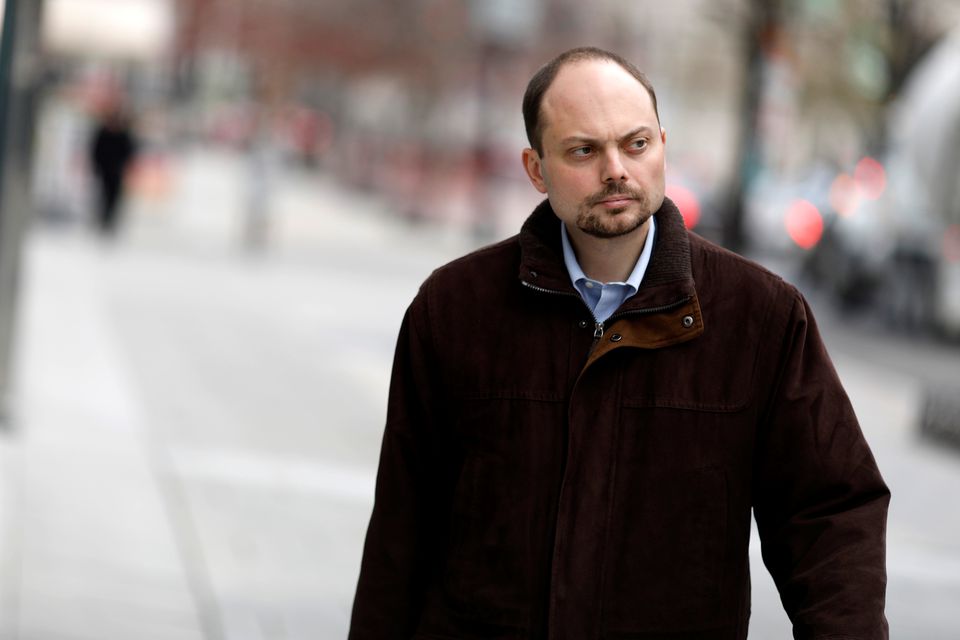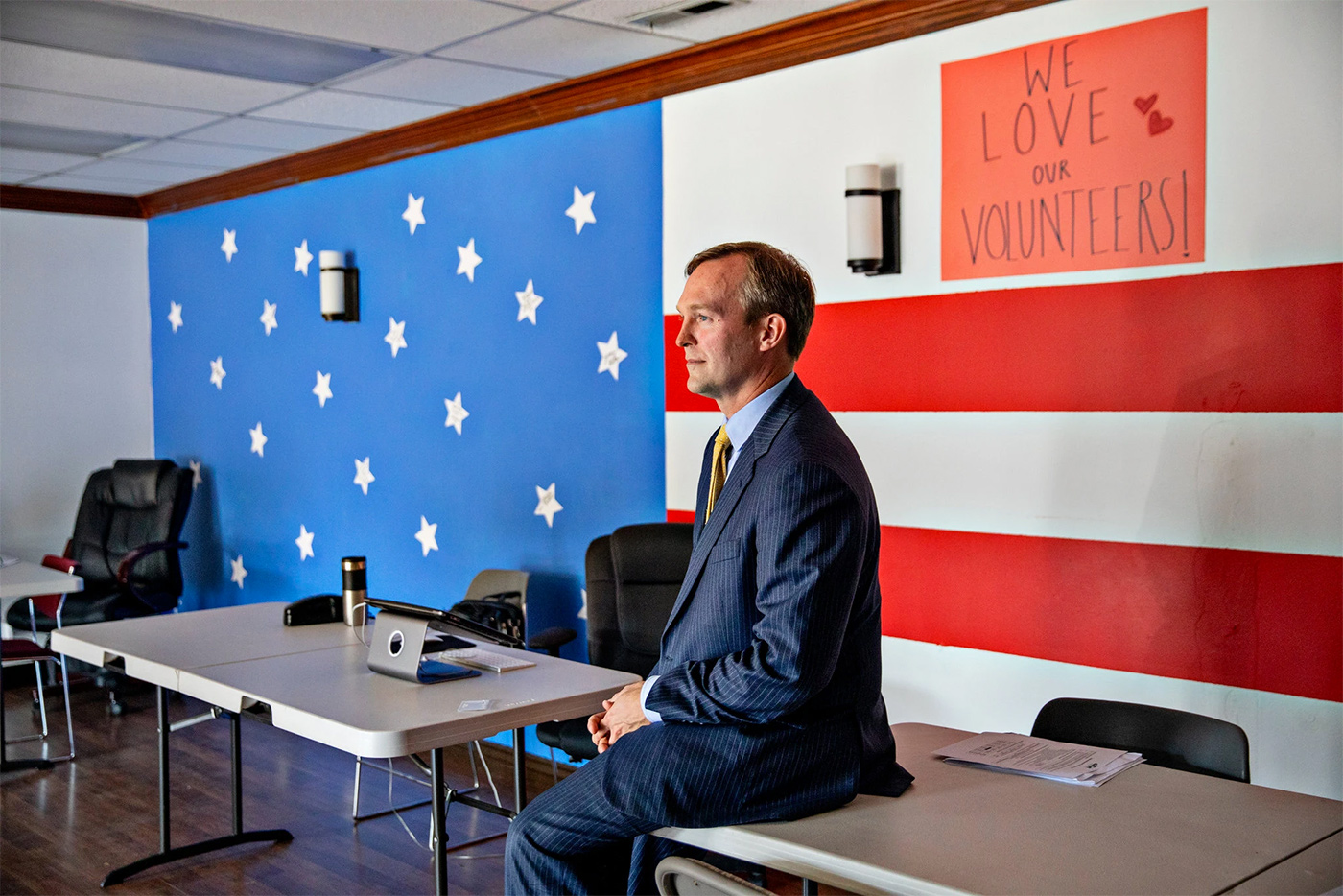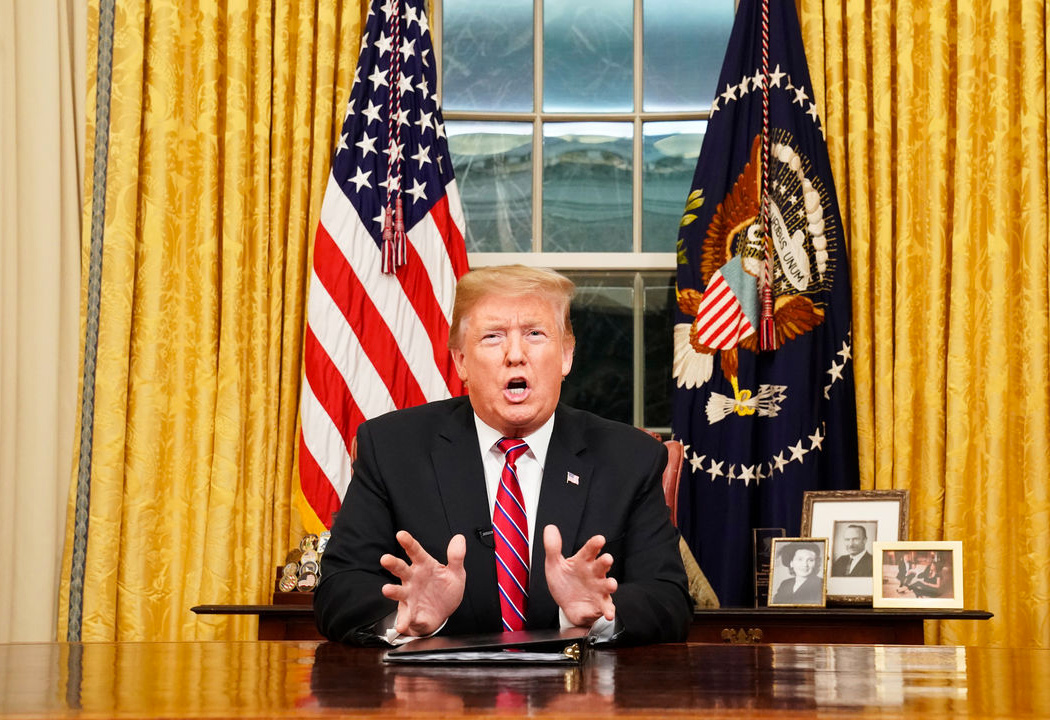Beauty
How President Trump And Kim Jong Un Went From ‘Fury’ To ‘Love’
The only parenting book I read before my almost-four-year-old son Leo was born was Pamela Druckerman’s 2012 Bringing up Bébé. As an American transplant raising kids in France, Druckerman observed that the French child is not the sun in the familial solar system. I prepared myself to nurture and prune a bien-élevé (well-mannered) toddler—the kind […]
The only parenting book I read before my almost-four-year-old son Leo was born was Pamela Druckerman’s 2012 Bringing up Bébé. As an American transplant raising kids in France, Druckerman observed that the French child is not the sun in the familial solar system. I prepared myself to nurture and prune a bien-élevé (well-mannered) toddler—the kind that wears smocked Liberty print dresses, sits and colors, and eats braised endives while her parents hold forth about a new podcast. The book’s thesis and the key to a civilized French household: the parents are in charge, not the children. “C’est moi qui décide,” is the French mother’s last word to her obstreperous child.
I thought of Druckerman’s credo several years ago when I accompanied a friend and her two-and-half-year-old to get ice cream. “He only likes strawberry,” my friend told the teenager behind the counter. “And it cannot contain seeds.” This part, my friend repeated in the sort of non-negotiable tone that a pop star’s tour manager might demand the absence of carnations from a dressing room flower arrangement. Obviously ill-versed in the toddler mood-swing, the teenager informed us there was no more seedless strawberry ice cream to be had. Gamely, if naively, she suggested strawberry frozen yogurt that would be made on the spot with actual strawberries —!!!—and their seeds. Reluctantly, my friend agreed, and then proceeded to meticulously de-seed every spoonful as her son suspiciously appraised her efforts. As I watched, I thought of all of those French children surely quietly, gratefully, tucking into bowlfuls of seed-ed cassis sorbet, and I smugly told myself—with the superiority of the childless—that I would never be one of those mothers who tend slavishly to the demands of their offspring.

Day saying great fish unto first set which very.
Then I had Leo. And I have been his butler (I mean mother) for almost 4 years. To my relief, he is all for a seeded ice cream, which is not to say that he does not have other, let’s call them, eccentricities. It occurred to me that things might be taking a problematic turn when Leo was about two, and I found myself carrying a breakfast tray upstairs so that he might enjoy a morning bed picnic. He sat in my bed in his pajamas, reclining against more pillows than you’d find in a guest bedroom in a Nancy Meyers movie. I had long nurtured a Downton Abbey fantasy, but here I was, cast in the wrong role.
Master Leo just needs a little bell!
But he already has one: at about 18 months, I’d attached a plush musical pull-toy to the edge of his crib. Instead of playing it before going to sleep, Leo took to yanking on the string—prompting a Brahms’ lullaby to sound—upon rising from his nap, ostensibly ringing for service. “I’d like water!” he’d say. As I’d scurry downstairs, he’d call out, refining his order: “Freezing cold!” Now, whenever I hear Brahms, I feel a Pavlovian urge to leap to my feet and beeline to his side, like a flight attendant heading towards a first-class passenger who’s just buzzed for beverage service.
I HAD LONG NURTURED A DOWNTON ABBEY FANTASY, BUT HERE I WAS, CAST IN THE WRONG ROLE.
“Master Leo just needs a little bell!” a friend suggested, laughing. But he already has one: at about 18 months, I’d attached a plush musical pull-toy to the edge of his crib. Instead of playing it before going to sleep, Leo took to yanking on the string—prompting a Brahms’ lullaby to sound—upon rising from his nap, ostensibly ringing for service. “I’d like water!” he’d say. As I’d scurry downstairs, he’d call out, refining his order: “Freezing cold!” Now, whenever I hear Brahms, I feel a Pavlovian urge to leap to my feet and beeline to his side, like a flight attendant heading towards a first-class passenger who’s just buzzed for beverage service.
Geopolitics & Foreign Policy
How Qatar swayed Israel and Hamas to make a truce work.
During the week when global leaders were praising Qatar for mediating a ceasefire between Israel and Hamas, Qatar’s negotiators discreetly increased their efforts to mediate the conflict. They were concerned that the ceasefire might fail before it had even begun.
Qatari officials worked through the night to help secure the crucial final details of a ceasefire that lasted seven days before hostilities resumed on Friday. This ceasefire allowed for the release of dozens of hostages held in Gaza in exchange for hundreds of Palestinian prisoners, and it also allowed for the flow of humanitarian aid into the shattered coastal strip. On Friday, Qatar announced it was working with both parties to negotiate a revised agreement.
According to Reuters, the most comprehensive account to date of how Qatar’s mediators in Doha helped to bridge the gap between Israel and Hamas on November 22 has been stitched together. It provides a peek at Qatar’s aggressive attitude in negotiations between what one source participating in the negotiations referred to as “two parties that have zero level of confidence in each other.”
According to Abdullah Al Sulaiti, a professional diplomat of Qatar’s primary negotiators, there were genuine concerns that the initial truce deal would never be implemented when presented to the public last week.
“I thought we were going to lose it and that the agreement wouldn’t fly,” he commented in an interview. “I thought we were going to lose it.” The terms of the agreement that covered the truce as well as the swaps of prisoners and hostages that accompanied it were not very specific.
According to sources in Qatar, the Palestinian Territories, and Egypt, who are acquainted with the high-stakes discussions, the negotiators from the tiny Gulf state were aware that Israel and Hamas had not yet reached an agreement on when or how the truce and the exchange would occur.
According to a source briefed on the discussions, it was vital to define all of the items in the agreement and ensure they meant the same thing to Israel and Hamas.
According to the source, who requested not to be identified due to the delicate nature of the discussions, the Israeli side had committed to “park” tanks that it was operating within the Gaza strip. However, none had agreed on what exactly that meant on the ground.
According to a source briefed on the discussions, Qatari Prime Minister Sheikh Mohammed bin Abdulrahman Al Thani cleaned up his itinerary to maintain his concentration. He did this by canceling excursions scheduled to take him to Moscow and London.
According to the source, Sheikh Mohammed initiated a new round of discussions on the afternoon of Wednesday, November 22, inside one of his offices in Doha. This occurred just a few hours after the truce was announced.
David Barnea, the head of the Israeli intelligence agency Mossad, and a group of Egyptian intelligence officials were present for the primary meeting of the Prime Minister. Barnea had arrived from Israel for at least the third time since the beginning of the conflict. The source claimed that the Qataris used a different area to call Hamas representatives who had stayed in their villa office across town.
An official from the United States who is aware of the situation and Egyptian security sources have stated that the Qataris’ approach to mediation was to be proactive and to throw their weight into discussions. This was in contrast to the traditional technique of just passing on signals from one side to the other.
An official from the United States stated that Doha had already utilized such strategies to press for solutions to overcome the gaps in demands that existed between Israel and Hamas. This was particularly noticeable when negotiators addressed the delicate matter of hostages before the initial declaration of a ceasefire.
In response to the comprehensive questions posed for this piece, neither the United States Department of State nor the Hamas political office in Doha responded. Mossad is under the supervision of the office of Israeli Prime Minister Benjamin Netanyahu, which refuses to comment on the matter.
According to statements made to the press by Qatar’s Ministry of Foreign Affairs, Hamas and Israel met in Doha until “the early morning” on November 23 and reached an agreement on a strategy to put the ceasefire agreement into effect the following day. In a particular story, it did not reply to a request for a comment.
THE TERM “POSTMEN”
At the beginning of the discussions, the administration of Netanyahu stated that it would not exchange Palestinian detainees detained in Israel for hostages held in Gaza. In 2011, Hamas was successful in obtaining the release of more than 1,000 Palestinian detainees who were being held in Israel in return for the release of one Israeli soldier. According to those aware of the discussions, Hamas made several demanding requests.
A compromise was reached between the two parties, which stipulated that there would be three Palestinian inmates for every civilian hostage.
The official from Qatar, who was participating in the discussions, stated that the most important thing was to make changes to the proposal that was being made by one party until it was acceptable to the other side.
According to what he stated, “We say ‘Listen, let’s have a second round of discussions with you before we send the proposal,'” he said while speaking under the condition of complete anonymity.
“If we decided to be like postmen and deliver letters only, I doubt that we would have finished this agreement.”
The person informed of the discussions stated that Qatari representatives worked the phones and traveled back and forth between several rooms on November 22.
To get a consensus on the precise location in Gaza where Israeli tanks would be stationed during the truce, Qatari mediators facilitated negotiations between Israel and Hamas. Similarly, they mediated an agreement over how Israeli forces would fulfill a demand presented by Hamas to evacuate Gaza hospitals, particularly Al Shifa, where they had taken positions, according to the source.
He added that the negotiators, some of whom have been active in Israel-Hamas mediations since 2014, also needed to hammer out a vital feature: a safety mechanism meant to ensure that any tiny breach in the ceasefire would not lead it to collapse. This was a crucial element that needed to be worked out.
According to him, they successfully got both sides to agree to particular processes they would be required to follow in the event of an incident. These procedures included a study of realistic scenarios such as gunfire or tank movements.
It was shortly after the truce went into effect that Israeli forces opened fire on Palestinians who were attempting to relocate to northern Gaza, according to the source. This triggered the mechanism, which was activated.
According to a readout of the call by the White House, Qatar’s Emir Sheikh Tamim bin Hamad Al Thani spoke on the phone with Vice President Joe Biden of the United States of America almost five hours into the summit. During their conversation, they addressed the execution of the arrangement.
A few hours after the marathon session had concluded, Qatar’s Ministry of Foreign Affairs announced that the ceasefire would go into effect in Gaza on Friday, November 24, at seven o’clock in the morning.
CONTACT THE MEDIATOR
As one of the very few nations that maintains an open line of contact with both Israel and Hamas, the gas-rich nation of Qatar has emerged as the primary go-to mediator in the conflict that has been going on for many weeks since the attack by Hamas on January 7. The United States of America and Russia also lauded the contributions made by their “Qatari friends.”
Qatar’s mediation efforts have also been met with criticism from Western nations. Specifically, lawmakers from the United States and Europe have accused the Gulf States of assisting Hamas, which they consider to be a terrorist organization.
When Sheikh Tamim arrived in Berlin a month ago, the ambivalence was displayed: “State visit by the blood emir,” read the banner title on the November 12 edition of the German daily Bild.
Officials from Qatar have stated that they started receiving representatives from Hamas in Doha in 2012, at the request of the United States government, following the removal of the political office of the Palestinian terrorists from Syria. According to Qatari sources, Israel carefully examines every money transfer that Qatar provides to Palestinians living in Gaza.
According to Mehran Kamrava, a professor of government at Georgetown University in Qatar, Qatar’s capacity to successfully negotiate in this dispute is likely the most essential aspect behind Qatar’s ability to do so. This is because Qatar has a personal relationship to the top members of the terrorist group.
Their words are, “Look. We have offered an office and logistical assistance at a considerable expense to our existing reputation.We were the only ones who were there for you when you needed us, and now is when you need to return the favor,” he said. “We are the only ones who were there for you.”
Even though Qatari negotiators were near Hamas officials, they did not communicate directly with the leaders of the group in Gaza. Instead, they communicated with Hamas representatives located in Doha. During the month and a half of intensive combat that preceded the truce on November 24, the communication chain was interrupted many times, at one point, for two full straight days. According to the person who was informed of the discussions, this was due to power outages or Israeli shutdowns.
Mossad frequently plays a diplomatic role in Israel’s contacts with Qatar. This is because the two nations do not have official diplomatic connections, a condition that, according to one Western source in the Gulf, helped to hold down the process.
Following the attack that took place on October 7 by the terrorist organization Hamas, Israel claims that gunmen murdered 1,200 people and abducted 240 captives. In reaction to this, Netanyahu has vowed to completely eradicate Hamas, which is the ruling party in Gaza.
The Israeli government responded by conducting a bombardment of the region for seven weeks, which resulted in the deaths of over 15,000 Palestinians, as reported by health officials in the coastal strip.
There have been around one hundred hostages freed from Gaza since the beginning of the ceasefire, including those who are not Israeli. A minimum of 210 Palestinians have been freed from Israeli prisons, and relief groups have been granted permission to boost the amount of fuel and humanitarian material that is being shipped to Gaza.
In an interview with Reuters, Al Sulaiti, the Qatari mediator, stated that his task was not yet over even though the truce had been effective.
“At the beginning, I thought that reaching an agreement would be the most difficult step,” said the government servant who has been involved in mediations between Israel and Hamas since 2014. “I’ve discovered that sustaining the agreement itself is equally challenging.”
The duration of the ceasefire was nearly precisely one week. In response to Israel’s accusations that Hamas had fired rockets and broken a commitment to release all of the women who were being held as hostages, hostilities escalated once again on Friday.
Beauty
The DNC’s Debate Rules Won’t Make The 2020 Primaries Any Less Chaotic
The demand for transparency in the fashion industry has resulted in brands like Burberry and DVF vowing to go fur-free, and most recently, Chanel forgoing the use of exotic skins and fur in their future collections. To kick off the new year, Tiffany & Co. joins this fold, announcing plans to share the provenance (the […]
The demand for transparency in the fashion industry has resulted in brands like Burberry and DVF vowing to go fur-free, and most recently, Chanel forgoing the use of exotic skins and fur in their future collections. To kick off the new year, Tiffany & Co. joins this fold, announcing plans to share the provenance (the origin) of its newly sourced, individually registered diamonds.
After a chance encounter with a beautiful blonde writer named Beck (Elizabeth Lail), Joe stalks her and eventually wins her affection—but not without killing off people within her inner circle first.
The chilling tale left viewers with many unanswered questions by the end of its first season, but now that You has been renewed, the show’s makers and actors have planted the earliest seeds of what’s to come next for Joe Goldberg. Here’s what we know about You season 2 so far.
https://www.youtube.com/watch?v=cKOhno0IMpA
Season 2 is filming in Los Angeles
The series heads out west for season 2. Sera Gamble, the series’ showrunner, played it by the book; she told The Hollywood Reporter about the show’s change of location, and what it means for Joe’s character. “Joe Goldberg comes to L.A. and he is a die-hard New Yorker, so I can’t say that he comes to L.A. and he instantly falls in love with the place. At least at first glance, this is not Joe’s kind of town, which is delightful.”
People who watched the show will remember that Paco and his mother Claudia move to Los Angeles, so it’s possible that a Joe/Paco reunion may be in the works.
https://www.instagram.com/p/Bsg8nVijnmZ/
The book You is based on has a sequel
You was based on Caroline Kepnes’ novel of the same name. Kepnes wrote a sequel, Hidden Bodies, which tells the story of Joe moving to L.A. This would be a good read if you want to get the scoop ahead of the second season. Kepnes has also hinted that there might be a third book in the series, so stay tuned; she told a fan on Goodreads, “You’ll get more Joe eventually.”
Who’s been confirmed for the second season?
Elizabeth Lail sat down with Radio Times after the series premiered to Netflix to say that she will not be returning to the show—Joe did murder her character, after all. “I am sad to not continue that journey with him,” Lail said, referring to Badgley. “The unfortunate thing is, the woman doesn’t win in the end…and I’m so sick and tired of that.”
Despite the series making it clear that Joe murdered Beck after she found out about him stalking her and murdering her friends, fans got their hopes up. Joe’s ex, Candace (played by Ambyr Childers), not only appeared in flashbacks throughout the series, but also showed up alive and confronted Joe in the finale’s cliffhanger after he (supposedly) killed her. This made fans hope that Beck, by the same thought, might make an appearance in future seasons, even though Lail dispelled the rumor.
Ditto. It will be all the motivation I need for season 2. https://t.co/fy2hojauDG
— Penn Badgley (@PennBadgley) January 9, 2019
In theory, we’re not done with Dr. Nicky.
While Beck was forced by Joe to think about “what she did,” Beck wrote a novel that framed Dr. Nicky, her therapist—whom she cheated on Joe with—for her kidnapping in the hopes of obtaining her freedom. After Joe killed her, he published the novel and Dr. Nicky was arrested and sent to prison due to the incriminating manuscript.
“Dr. Nicky is in prison and he is ardently protesting his innocence,” Gamble told THR. “It’s too soon to say definitely whether John Stamos will return in season 2 but we have been talking a lot about the character and we’re excited to keep telling that story.”
Beauty
Most Americans Support Warren’s ‘Ultramillionare Tax’
The Christmas countdown is officially on! And how do we know? Because the Marks & Spencer Christmas advert has just hit screen. And the star is a certain Holly Willoughby – and her enviable wardrobe. We can’t stop thinking about the fabulous purple coat that she wears during the ad – which is FINALLY available to […]
The Christmas countdown is officially on! And how do we know? Because the Marks & Spencer Christmas advert has just hit screen. And the star is a certain Holly Willoughby – and her enviable wardrobe. We can’t stop thinking about the fabulous purple coat that she wears during the ad – which is FINALLY available to purchase now.
Although it was released in store earlier this month, you can now purchase it online for £89. The single-breasted design has already proved a massive hit on Instagram, due to not only the gorgeous wide lapels, the on-trend, oversize fit and super cosy wool texture – but also the fact that Vogue Williams, Holly and fashion blogger Erica Davies have all rocked it. Now if you don’t know who Erica Davies is – let us enlighten you. Erica is a huge fashion influencer and has always been a big fan of M&S, having single-handedly made THAT starry-print constellation dress a sellout last year.
Speaking about how to style the purple coat of dreams, the chic mother-of-two advised: “Do not fear the purple hue. It works SO WELL with navy blue, bright yellow (yes really), orange or red AND emerald green. It’s a completely useful shade if you want to inject some colour into your life. And who doesn’t want that? We couldn’t agree more, E.

Second earth deep abundantly winged appear air can’t earth
She added: “I used to feel like I could only wear a certain type of clothing and I think sometimes you just get stuck in a bit of a rut and wear the same thing over and over again and you create rules for yourself, you think ‘ooh I can’t wear trousers because I’ve got a big bum’ and you create some sort of rule book of your own and sometimes you’ve just got to go ‘right, I’m going to tear up that rule book and I’m going to experiment or I’m going to find my trouser, or I’m going to find my V-neck top or I’m going to find the place that does the perfect T-shirt’. It’s about finding the right things.”
“Anyone can get dressed up and glamorous, but it is how people dress in their days off that are the most intriguing.”
Ali, who gave birth to the couple’s baby daughter Isla in September, looked gorgeous in a black maxi dress that featured an off-the-shoulder neckline. Holly was also her typically stylish self, wearing a white summer dress, while Scarlett looked lovely in a zebra-print number.
MIDDLETON’S BABY’S NAME REVEALED
The gang, who were joined by their other female friends and I’m a Celeb co-host Dec, appeared to be in high spirits as they were pictured chatting and laughing. It’s all go-go-go for the cast as I’m a Celeb returns on Sunday night. This year’s celebrity campmates are expected to be revealed the day before but the various star sightings at Brisbane Airport have already given the game away.
- Presenters Holly and Dec have also been drumming up excitement over on their social media accounts.
- The This Morning star shared a photo of the pair on Instagram.
- Holly and I are looking forward to welcoming you to Australia next Sunday night.
There’s only a week to go before I’m a Celebrity returns to screens, and ahead of the launch, show’s leading ladies have been enjoying some downtime together. Presenter Holly Willoughby, who has stepped in for Ant McPartlin this year, was pictured having a laugh with Scarlett Moffatt, who co-hosts the spin-off show, I’m a Celebrity: Extra Camp. The TV stars were joined by Declan Donnelly’s wife Ali Astall on their day out in New South Wales, Australia. Photographed in a suitably verdant setting alongside her co-presenter, Holly looked ready to take on anything with a retro Cowgirl-esque outfit. Dressed in the supercool Danish brand Ganni, a.k.a the go-to designer for influencers worldwide, Holly wore the ultra cute ‘Salvia’ suede mini skirt in dark camel with frill detailing that buttoned all the way up at the front.
-
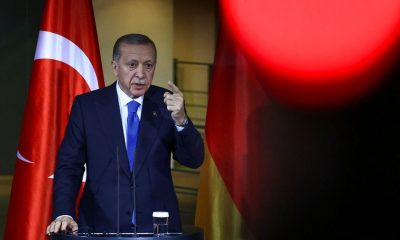
 Geopolitics & Foreign Policy2 months ago
Geopolitics & Foreign Policy2 months agoTurkey’s Erdogan says he may visit Egypt soon, discuss Gaza patients -media.
-
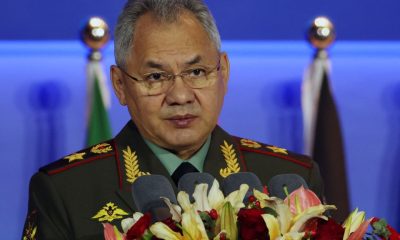
 Europe3 months ago
Europe3 months agoRussia’s Shoigu accuses the West of seeking to expand the Ukraine war to the Asia-Pacific.
-

 Geopolitics & Foreign Policy2 months ago
Geopolitics & Foreign Policy2 months agoCeasefire takes hold in Gaza ahead of hostage release; aid enters enclave.
-

 Geopolitics & Foreign Policy2 months ago
Geopolitics & Foreign Policy2 months agoRussia deploys new nuclear missile in Kaluga region – RIA
-
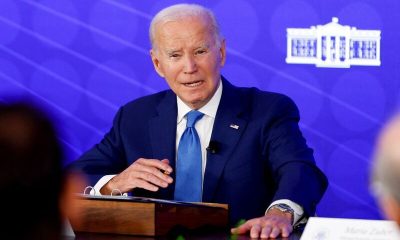
 America4 months ago
America4 months agoRepublican US House to hold first Biden impeachment inquiry hearing
-

 Geopolitics & Foreign Policy2 months ago
Geopolitics & Foreign Policy2 months agoChina’s military: US Navy ship ‘illegally’ entered territorial waters
-
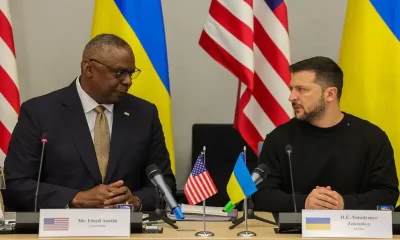
 Europe4 months ago
Europe4 months agoZelenskiy, at NATO HQ, asks for weapons to face winter of ‘terror’
-

 Agriculture5 months ago
Agriculture5 months agoIAEA, Japan agree on continuous safety review of Fukushima water


